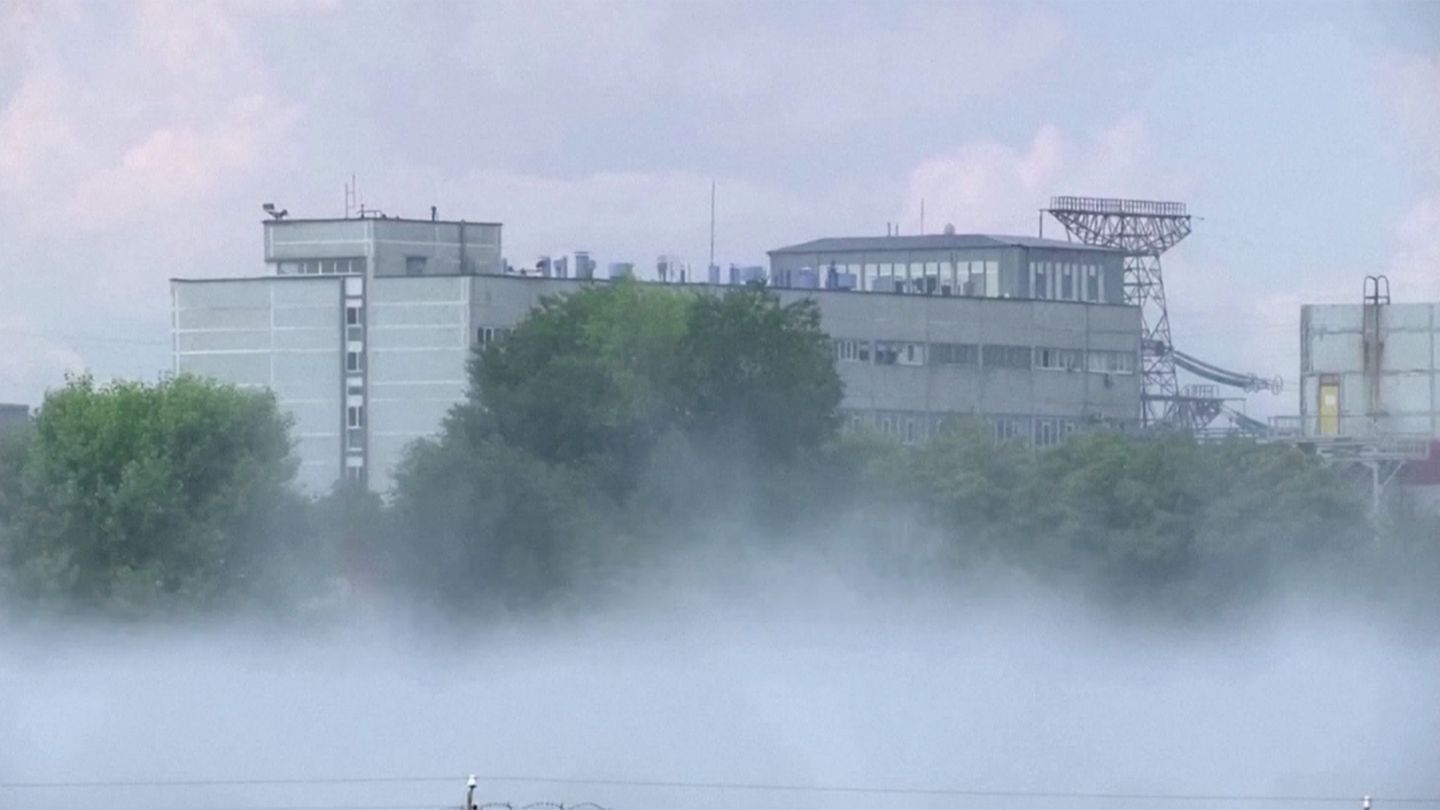Power went out in many places in Ukraine after Russian rocket attacks. Europe’s largest nuclear power plant in the southern city of Enerhodar was supplied with emergency power from diesel generators. IAEA boss Rafael Grossi is extremely alarmed.
Just a few days after invading Ukraine, Russia occupied the Zaporizhia nuclear power plant. The fighting around the largest nuclear facility in Europe raised fears of a reactor catastrophe. According to the operator, after Russian attacks on Thursday night, the nuclear power plant was cut off from the power supply for several hours – a security risk with potentially dramatic consequences. The nuclear power plant needs electricity, among other things to keep the reactors cool. If the power supply from the power grid fails, as happened on Thursday, emergency generators step in. But the diesel generators could only cover the energy needs of the plant for ten days, said the energy company Energoatom. If it should not be possible to renew the external power supply of the power plant in this time, there could be an “accident with consequences for the whole world”. Later, the operator Ukrenergo announced in the online service Telegram: “Ukrenergo specialists have restored the power supply of the Zaporizhia nuclear power plant, which was interrupted by today’s rocket attacks.”
Zaporizhia NPP as a military base
On March 4, 2022, Russia occupied the nuclear power plant in southern Ukraine. “Russian troops turned the power plant into a military base,” says Dmytro Orlov, the mayor of the city of Enerhodar, the site of the plant. The Russians used the power plant as a “nuclear shield to store military equipment and ammunition,” says the mayor, who now lives in the regional capital, Zaporizhia, 120 kilometers away. According to his information, at least a thousand Russian soldiers are stationed in Enerhodar. “Most of them in the power plant because they feel safe there,” says Orlow. Before the invasion, 11,000 people worked at the power plant, now, according to the operator Energoatom, there are only 6,500. Thousands of specialists fled to the areas controlled by Kiev, and of those who stayed, around 2,600 said they were ready “with the Russian aggressor to work together”. “There’s a real staffing issue and it affects security,” says the mayor.
New kilns
Germany is phasing out nuclear power – in complete contrast to other countries
“Risk of Nuclear Incident”
The nuclear power plant used to generate 20 percent of Ukraine’s electricity. Despite being bombed, it remained operational for the first few months of the war before being shut down in September. Since then, none of the six Soviet-era reactors have produced electricity. Nevertheless, the plant was still connected to the Ukrainian energy grid. According to Energoatom, the connection was interrupted a total of six times, which poses the “risk of a nuclear incident”. In September, the International Atomic Energy Agency (IAEA) sent observers to the power plant and tried to negotiate its demilitarization – so far without success. “The mere fact that the observers are here is a plus,” says the mayor. He relies on reason in the face of the danger: “No one will end the occupation of the largest nuclear power plant in Europe by military means.”
Source: Stern
I have been working in the news industry for over 6 years, first as a reporter and now as an editor. I have covered politics extensively, and my work has appeared in major newspapers and online news outlets around the world. In addition to my writing, I also contribute regularly to 24 Hours World.




